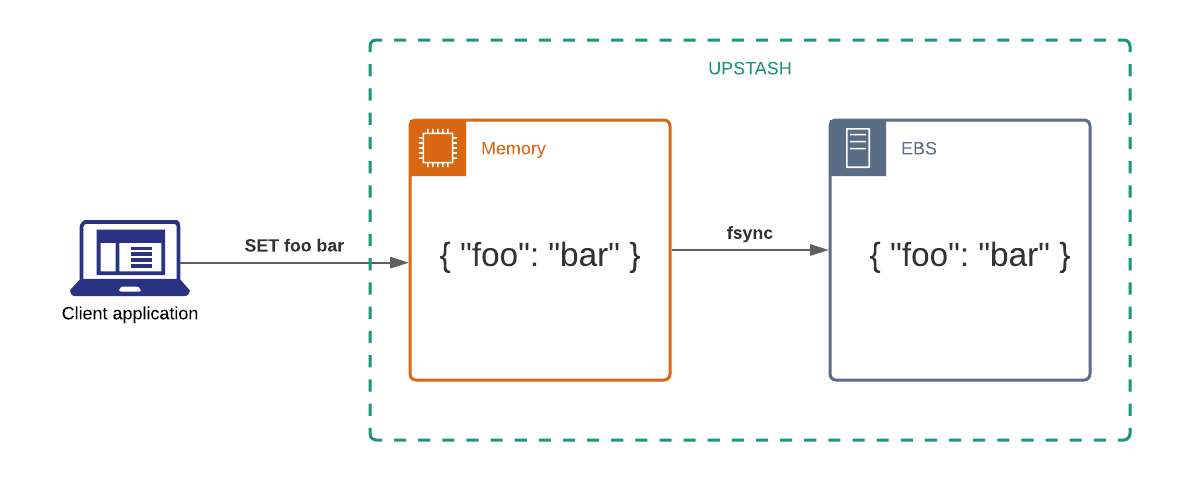Multi Tier Storage
Upstash keeps your data both in memory and disk. This design provides:- Data safety with persistent storage
- Low latency with in memory access
- Price flexibility by using memory only for active data

Can I use Upstash as a database?
Definitely, yes. Some users are worried that Redis data will be lost when a
server crashes. This is not the case for Upstash thanks to Durable Storage.
Data is reloaded to memory from block storage in case of a server crash.
Moreover, except for the free tier, all paid tier databases provide extra redundancy by replicating data to multiple instances.

